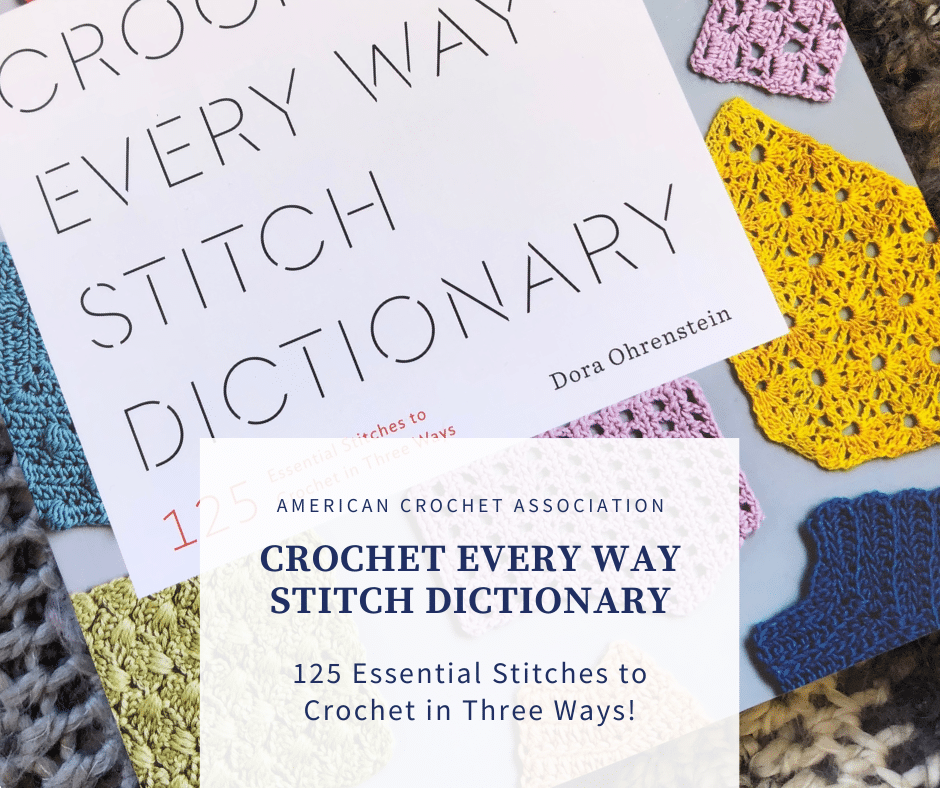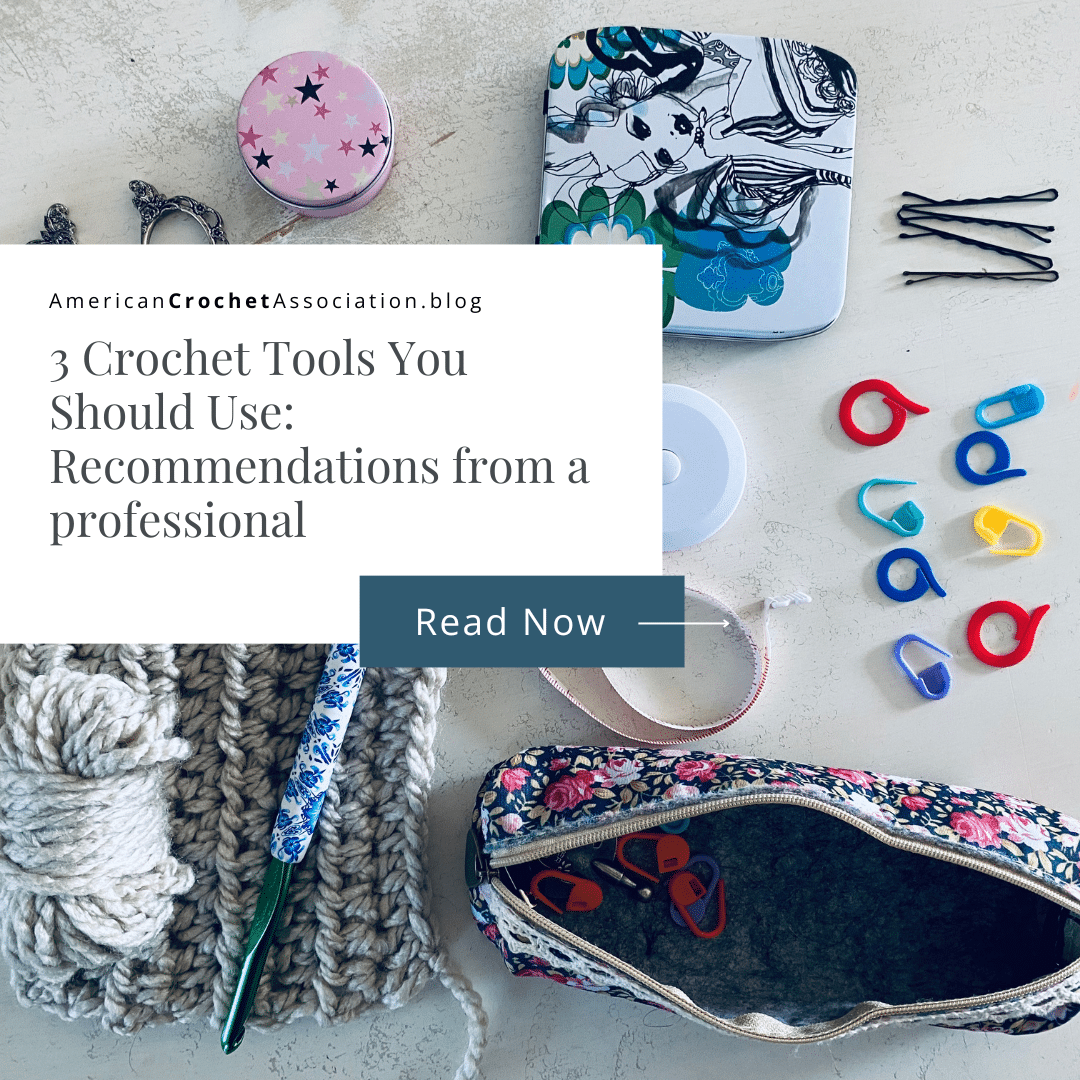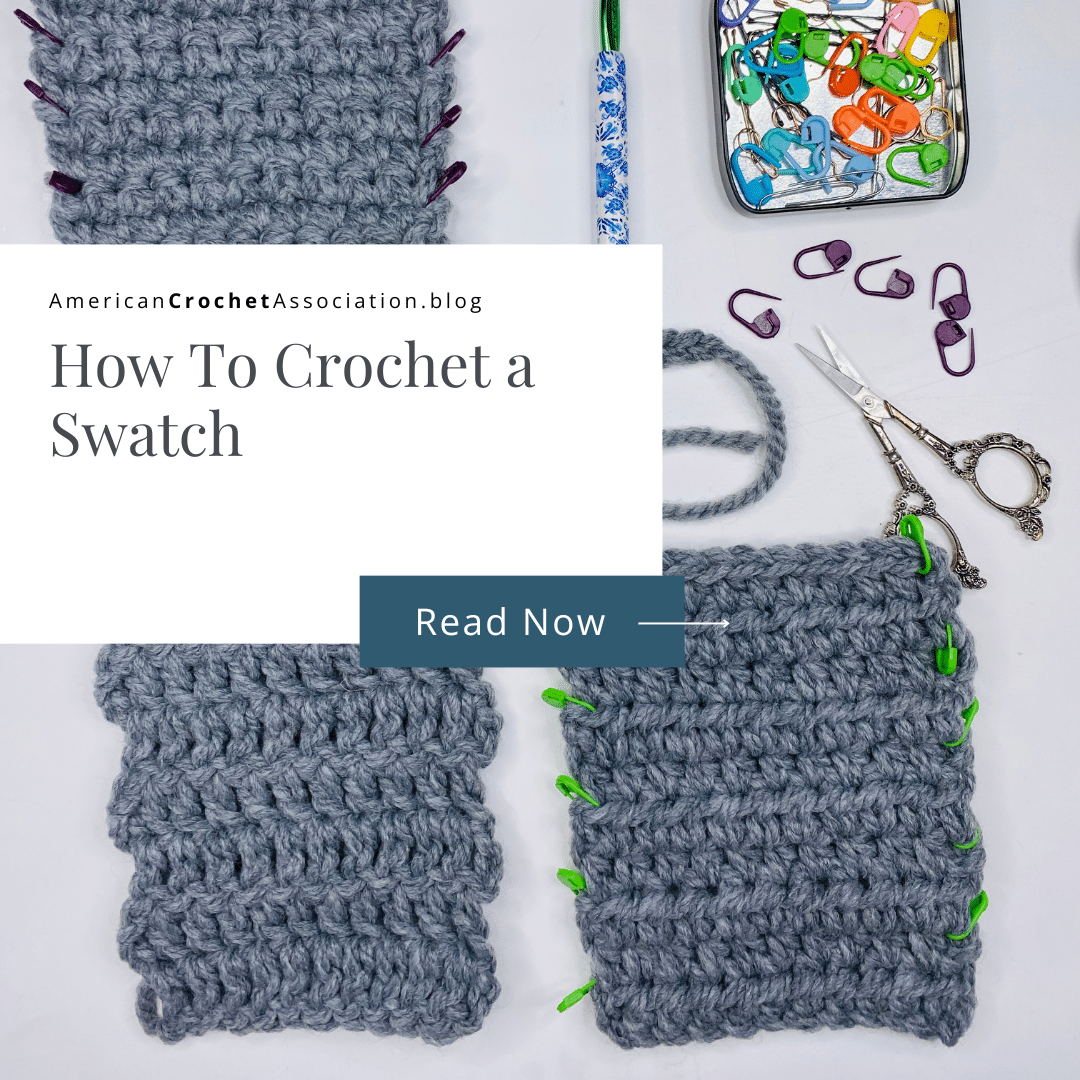If you only crochet and don’t knit, then you might glance over a book titled The Knitter’s Book of Yarn.
It would be a mistake to do so.
Subtitled “The Ultimate Guide to Choosing, Using, and Enjoying Yarn,” this book is the single most comprehensive guide that you could ever come across to help you better understand the fiber that you work with.
Whether you knit, crochet, weave, or even just want to learn about yarn from start to finish, this is the go-to book for your fiber education.
Author Clara Parkes is not just a knitter who wanted to write about yarn.
She is, first and foremost, a yarn expert.
Her website previously named her a “wool whisperer” which is certainly accurate because she has so much knowledge about wool fibers that she can tell you about almost anything.
(She’s also authored a terrific book of knitting essays called The Yarn Whisperer.)
If you head to her website today, you’ll see that “wool whisperer” has been replaced by “wool advocate.” This really speaks to the depth of not only her knowledge, but her passion, for the subject.
Of course, wool isn’t the only yarn that we knit or crochet with, and the book itself goes into great depth about all different types of fibers.
If you love wool, great, but if you’re a fan of plant-based fibers such as cotton or even synthetic yarn, you’ll find plenty of attention to devoted to all of their details as well.
Table of contents
- What You Can Learn from This Book?
- There Are Four Sections in This Book
- Four Types of Fiber
- All the Steps of Making Yarn
- Plies and Projects
- Interview
- What inspired you to write this book?
- What were some of the biggest joys of working on The Knitter’s Book of Yarn?
- What about some of the challenges?
- What is your favorite pattern from the book?
- At what point in your knitting journey did you get interested in the details of the yarn itself?
- I noticed that some of the patterns incorporate a little bit of crochet. Do you crochet?
- What is currently your favorite fiber to work with and why?
- What is your number one favorite memory of a specific yarn?
- What is the Great White Bale Project?
- Is there anything you’ve learned or discovered since the book’s publication that you wish you could go back and add?
- What is one thing that you wish more people understood about yarn?
Estimated reading time: 12 minutes

What You Can Learn from This Book?
So, what are you going to find in The Knitter’s Book of Yarn?
Well, with 250+ pages in the hardbound copy, there’s not much you won’t find here about yarn!
But Clara sums it up best at the end of the book’s introduction where she writes:
By the time we reach the end of our journey, you will have a much better understanding of yarn, how it’s made, who makes it, how it gets to you, and what it longs to become in your hands.
Clara Parks
There Are Four Sections in This Book
- First, Clara begins with “fiber foundations” where we learn about all different types of fibers including animal-based, plant-based, and synthetic materials.
- Then Clara goes into great detail about how yarn is made. If you’re interested in what makes a yarn organic, how mills differ from microspinneries, or how color gets into yarn then this is the section you’ll love most.
- The same fiber can become a very different yarn depending on ply, so section three tells us all about that. This is where you’ll learn about texture, boucle, brushed yarn, and felting. This is also where all of the book’s knitting patterns are located.
- Finally, we’ll “put it all together” with extra information ranging from figuring out Wraps Per Inch (WPI) to learning how to properly wash different fiber types.
Four Types of Fiber
If you only had time to read the thirty or so pages relating to fiber types at the beginning of the book, then you’d still have gotten your money’s worth.
There is so much rich information in this section.
For example, did you know that there are two types of plant-based fibers: cellulose (like cotton and linen) and cellulosic (such as rayon)? The difference is in the processing.
Clara calls animal fibers “protein fibers” and teaches us all about the different types of animals and their hair.
We learn that animal hair has scales and that the varying thickness of those scales affects the smoothness and reflectiveness of the resulting fiber.
We learn all about:
- different types of sheep yarn
- mohair vs. cashmere (which both come from goats) and cashgora, which comes from an attempt to breed those two goats
- pygora and pashmina, which are also goat types
- angora, from bunnies
- yarn from camelids (camel, alpaca, llama, guanaco, and vicuna)
- qiviut yarn, which comes from the musk ox
- yak, opossum, and silkworm yarn
Learning all about the yarns means that each section includes information about the animal’s hair, how it’s harvested, where in the world it usually comes from, what it looks like in yarn and in yarn blends, and how to knit with it.
The latter information isn’t specific to crocheters but offers some helpful insights.
For example, Clara mentions that cashmere tends to pill and grow thin over time, so some people don’t like to use it for socks – which is relevant whether you knit or crochet those socks.
Clara goes on to give us the same in-depth information about plant-based fibers (including bamboo, soy, and corn yarn) and synthetic yarn (such as polyester and acrylic.)
All the Steps of Making Yarn
Clara didn’t just read a book about how yarn was made.
She traveled the United States with wool, taking it through all of the different steps of the process, and talking to experts everywhere in order to gain a thorough understanding that she passes along in this book.
(Learn more about this adventure in the interview below when she discusses the Great White Bale project.)
In this section, we learn the difference between large yarn companies, small mills, and even smaller micro-spinneries, which are sometimes community-based coops. We learn about fiber farms and fiber festivals.
Plus, we learn a lot about yarn. We learn about mill ends (which are bits of yarn that you can buy at a bargain).
If you want to know what organic means or what a minimally-processed yarn is, then you’ll get the answer here.
If you’re curious about how to define a hand-dyed yarn or what it means to be “dyed in the wool” then this section will explain it.
Oh, and you’ll get to see lots of lovely photos of yarn in this section (and all throughout the book.)
How does this information help you as a crocheter beyond just satisfying curiosity?
It tells you a lot about the yarn that you might work with which helps you make the best decisions for each project.
For example, Clara shares:
Knit up, worsted-spun yarns tend to have a crisp, clear stitch definition that’s ideal for stitchwork in which you want a vivid, sculptural effect. The effect is slightly muted in two-ply yarns, where the visible ply definition can soften the stitches; but the more plies you add to the yarn, the fuller and more high-relief your stitches become.
Clara Parks
While not all of the notes about how knitting works up will apply exactly to crochet, most of them are relevant.
Oh, and by the way, if you’ve ever wondered what “worsted” means in yarn – beyond just being the most commonly used yarn weight – then this book answers that, too.
Plies and Projects
The bulk of the book is devoted to learning about yarn plies, which also means learning about yarn texture and drape.
This section also has forty knitting patterns.
If you both knit and crochet, then you can enjoy working on the projects in this book to really get a sense of what Clara means when she explains the ply information applicable to each project.
However, even if you only crochet, you can still get a great sense of how yarn works by reading through the notes here.
For example, in explaining two-ply yarns, Clara shares in great detail why this type of yarn is perfect for lacework. (It has to do with the airiness and effect of shadows.)
This explanation is followed by a variety of two-ply knitting projects including several wraps, cardigans, and socks.
Each project explains a little bit more about how two-ply yarn works in different weights. If you knit, you can also learn how it works in different stitches.
A few of the knitting patterns in this book also incorporate some crochet.
For example, a three-ply cabled swing cardi closes shut with crochet ties.
A four-ply patchwork blanket has a single crochet edging for the border as does the neck and armholes of a sleeveless top.
This demonstrates that the information in the book applies to crocheters even though the projects are geared towards knitters.
The book ends with a glossary, which defines more than 100 yarn terms. If you learn each definition in that glossary, then you’ll already have a strong working knowledge of yarn that you can carry forward into your work.
Interview
What inspired you to write this book?
This book began as a workshop that I taught at the Knitter’s Review Retreat, an annual gathering I had the pleasure of overseeing for 14 years.
That workshop was the first time that I’d put all of my yarn and fiber knowledge together into one place.
It came out so easily, and the order of the class was so clear to me, that when an editor at Random House called me two months later and asked if I had a book I wanted to write, I said, “why yes” I explained the premise of the class, and how the book would work, and by the end of the call I had a two-book deal with an option for a third.
What were some of the biggest joys of working on The Knitter’s Book of Yarn?
The writing itself was an absolute joy. After so many years of holding all of this information in my head, it spilled out with great ease.
I also loved researching, which is when I first started to realize just how much more there was to learn.
The world of fiber, twist, and ply is infinite.
What about some of the challenges?
The biggest challenge was adding the patterns.
I’d never coordinated with designers before. I’d never even assigned patterns before. Yet, here I was tasked with incorporating 40 patterns into the book. Forty!
Nobody told me that was a huge number.
I’m forever grateful to the designers who heeded my call, who really understood what I needed, and who added their spirit to the book. Ultimately, the patterns add so much, but it was definitely the biggest challenge of completing the book.
What is your favorite pattern from the book?
I don’t think I really have a single favorite pattern.
I love each for the way that it illustrates a deeper concept about fibers or yarns.
Every single pattern was conceived to illustrate a point that I wanted to make in the book.
For example, if I wanted to show how a specific yarn construction rendered stockinette or textured stitch work or colorwork, a pattern needed to demonstrate that.
I needed to find designers who I could trust to understand what I was after and execute on it.
At what point in your knitting journey did you get interested in the details of the yarn itself?
(After all, plenty of yarn crafters just buy yarn and don’t think much about it beyond whether or not they like it.)
I have always been, first and foremost, interested in the yarn.
Knitting has been a way for me to interact with yarn in a very hands-on way.
As an added bonus, I get a finished object! But the yarn was always first.
I noticed that some of the patterns incorporate a little bit of crochet. Do you crochet?
I do know how to crochet.
I don’t do it as often as I knit, only because I have a personal preference for certain kinds of fabric that are produced best through knitting.
But you can do some stunning things with crochet, too.
At the end of the day, it’s all about loving yarn, right?
What is currently your favorite fiber to work with and why?
I’ve always been, and continue to be, a diehard wool fan.
It’s just the most perfect fiber.
It does everything you could need. It breathes, it flexes, it keeps you warm and dry and comfortable. It even provides UV protection and extinguishes flame and filters out toxins in the air.
And it comes from friendly animals who need annual haircuts to stay comfortable and healthy.
What’s not to love?
What is your number one favorite memory of a specific yarn?
My favorite memory would have to be when I brought home the first skein of yarn from my Great White Bale project and started working with it.
What is the Great White Bale Project?
In 2013, I traveled the country learning all about how yarn was made in the United States.
I was using a 676-pound bale of extraordinary wool from a farm in New York as my learning material. So, I called it the Great White Bale project.
The itinerary involved visiting the farm on shearing day, then going to Texas to watch wool get scoured, and then accompanying the fibers to four different mills, and even to different kinds of dye environments.
I’d never been responsible for yarn on such a large scale before.
Getting to sit down and work with that first completed yarn skein, knowing every detail of its creation, was an extremely profound experience for me.
That sounds like an amazing experience. What about a time when a yarn frustrated you so much that you couldn’t work with it?
I’ve definitely had bad yarn experiences.
Over the years that I reviewed yarn for Knitter’s Review, I came across a handful of yarns that I just couldn’t use.
I’d cast on, start knitting, and within a few rows I’d know that this yarn had no story to tell.
Or no positive story, at least. Instead of writing about something negative, I’d put the yarn away and try something else instead.
Life is too short to write (or read) about yarn that makes you unhappy!
Clara Parkes
Is there anything you’ve learned or discovered since the book’s publication that you wish you could go back and add?
I think that the book is still remarkably solid in what it covers.
But, of course, I’d love to go back in and add everything I’ve since learned.
I’d love to expand the discussion of how we treat wool for machine-washability.
I’d also like to update the information about regenerated cellulose fibers.
There is always something new to learn about fiber, so there will always be more to add or update.
What is one thing that you wish more people understood about yarn?
I’d love for people to understand that yarn is far more than a means to an end.
It is a whole journey in and of itself. Fortunately, I think people are more aware of this now than they were when I started. So, we’re getting there!
CLICK HERE to learn more about yarn in the 12 Course Learning Path, only at the American Crochet Association!
Learn more about Clara from her website. You can also connect with Clara on Instagram.
Be sure to check out her other books which include:
- Knitlandia: A Knitter Sees The World
- A Stash of One’s Own: Knitters on Loving, Living with, and Letting Go of Yarn
- Vanishing Fleece: Adventures in American Wool (which digs deeper into the story of The Great White Bale.
This article contains some affiliate links.






